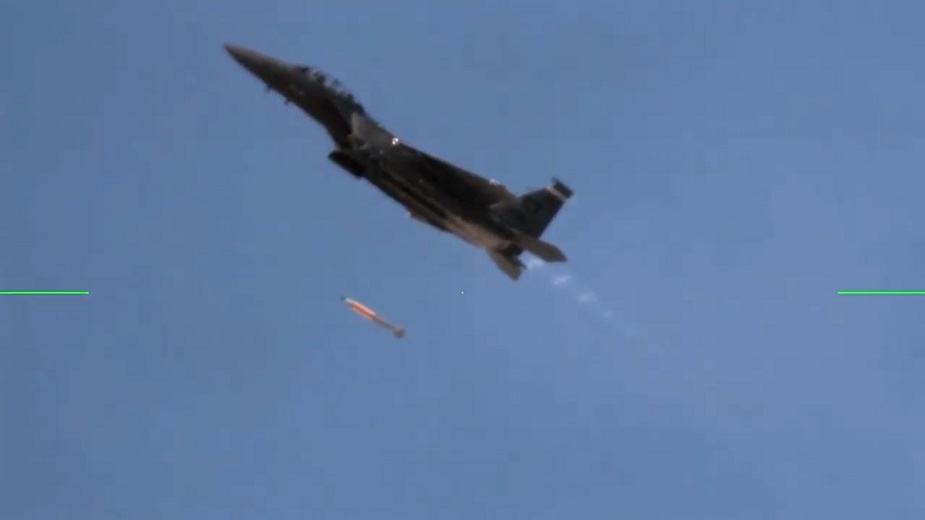The Department of Energy’s National Nuclear Security Administration (DOE/NNSA) and the U.S. Air Force (USAF) successfully completed two flight tests in March 2020 at the Tonopah Test Range in Nevada for the B61-12 Life Extension Program (LEP).
Follow Air Recognition on Google News at this link
 Using a U.S. Air Force supplied Boeing Tail Kit Assembly, the B61-12 LEP will consolidate and replace the existing B61 bomb variants in the Nation’s nuclear stockpile. The first production unit is scheduled for completion in fiscal year 2022 (Picture source: National Nuclear Security Administration)
Using a U.S. Air Force supplied Boeing Tail Kit Assembly, the B61-12 LEP will consolidate and replace the existing B61 bomb variants in the Nation’s nuclear stockpile. The first production unit is scheduled for completion in fiscal year 2022 (Picture source: National Nuclear Security Administration)
The B61-12 LEP is a joint program between NNSA and the Air Force preserving a critical element of the U.S. nuclear triad. This program will extend the B61’s service life while improving its safety, security, and reliability.
“The success of these tests is a major milestone on the path to full rate production and the B61-12’s initial operation capability on the F-15E in the coming years,” said Brig. Gen. Ty Neuman, NNSA’s Principal Assistant Deputy Administrator for Military Application. “Once delivered, this capability will underpin our nation’s deterrent and strengthen our NATO partnerships.”
Employing two Development Flight Test (DFT) Joint Test Assemblies, these tests were the final weapon system demonstration between the B61-12 and the USAF F-15E.
Completion of these tests satisfies F-15E compatibility and B61-12 system qualification test activities, culminating tens of thousands of engineering hours between NNSA and Department of Defense teams.
The two flight test assets were assembled using hardware produced by the Kansas City National Security Campus, Sandia National Laboratories, and Los Alamos National Laboratory.
Using a U.S. Air Force supplied Boeing Tail Kit Assembly, the B61-12 LEP will consolidate and replace the existing B61 bomb variants in the Nation’s nuclear stockpile. The first production unit is scheduled for completion in fiscal year 2022.
















